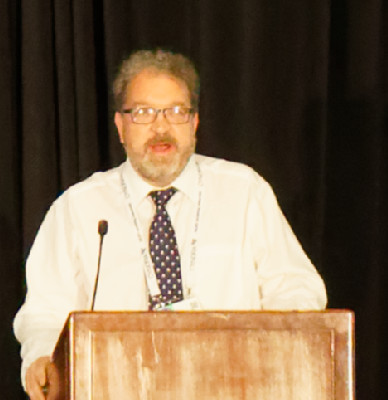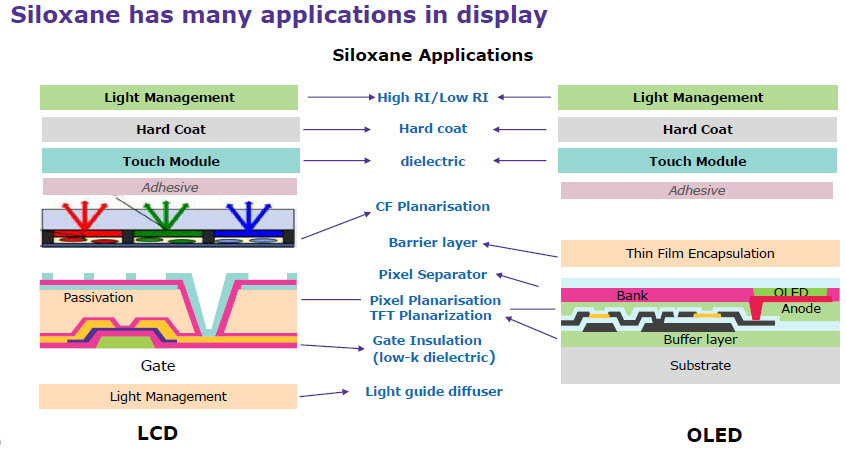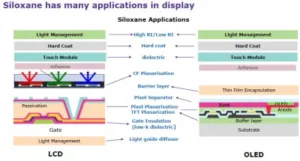 Dr Mark Verrall is the global head of R&D for liquid crystals for Merck, the leading supplier of LC materials, globally, although he works for the US subsidiary, which doesn’t use the Merck name and is called EMD Performance Materials. The company tries to make products of outstanding quality, he said. It has been working in LC materials since 1904 although nobody knew what to do with them until 1964 or so. The company has been involved in every significant advance in LC.
Dr Mark Verrall is the global head of R&D for liquid crystals for Merck, the leading supplier of LC materials, globally, although he works for the US subsidiary, which doesn’t use the Merck name and is called EMD Performance Materials. The company tries to make products of outstanding quality, he said. It has been working in LC materials since 1904 although nobody knew what to do with them until 1964 or so. The company has been involved in every significant advance in LC.
It is also developing OLED materials but Verrall said that it has been the competition with OLED that has pushed LCD to improve.
Merck claims the broadest range of materials in photoresists and reactive mesogens as well as materials for LEDs, including microdisplays. Merck continues to push LCD technology beyond its FFS and UB-FFS materials and PS-VA materials. LCDs can be made flexible and Merck is working on this. LCs can be used as light guides in lighting. The company is working with automotive companies on LCD modulated headlights. Merrck is looking at holographic displays and he thinks OLEDs will struggle with that.
Reactive mesogens are used in OLEDs to create very good black states as well as being used in 3D glasses.
Merck’s OLED materials are being developed for inkjet printing of TV panels and Merck is working on the whole stack of OLED materials with both evaporation and soluble materials. Inkjet printing is under test for TV panel applications and this could be disruptive in the TV market.
The company also makes LED materials and it can supply materials for lighting and automotive applications. The materials include special photoresists, metal organic precursors, new binders and encapsulants. The company also has a range of phosphors for LEDs.
Although current displays use photolithography to make the TFTs, Merck is able to supply printed materials that can be used to make printed TFTs directly onto plastic films including the semiconductor materials, with better performance than A-si.
Merck has some of the world’s most efficient qauntum rods, but they have cadmium (and we have heard subsequent to our DD on quantum rods that the use of cadmium means that there is no work on quantum rods, now – If Quantum Dots are So Good, Why do we Need Quantum Rods?). The company also has cadmium-free quantum dot materials.
The whole industry is driven by processes and Merck supplies a lot of materials based on siloxane to help manufacture and also the performance of LCDs to help them compete with OLED.

Analyst Comment
This talk was somewhat disappointing – it really was just a description of what Merck is doing, more like an advertisement than a conference speech. (BR)

